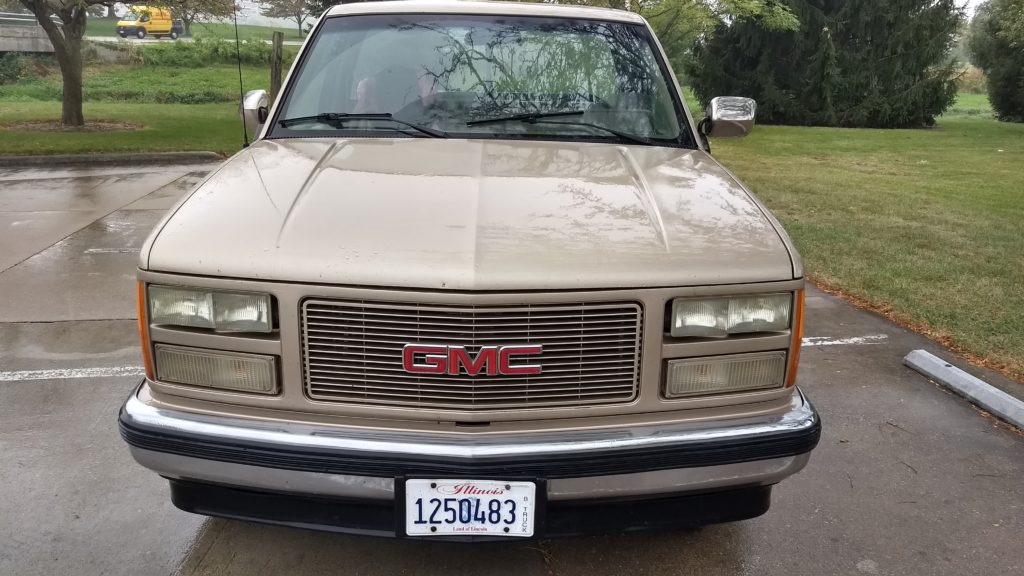
I went offline for project number 3. I drive a 1991 GMC C2500 pickup truck. I’ve owned this beautiful gold truck for about four years. In it’s own, non-Internet-y way, the truck itself follows our ground rules. It was cheap and paid for in cash (Rule #2). You can buy a laptop for more than I spent on this. Whenever possible I try to do the work on it myself (Rule #1). In many ways the truck is similar to open source software – it invites you to tinker, learn, and make it better. It was built in an era when you popped the hood, you could actually see all of the mechanics laid out in a (mostly) logical way and without plastic covering everything. Thanks to my father-in-law and Truck-Mentor, Jim, we have done a lot of work together to breathe new life into this truck:
- Replaced the radiator
- New tires
- New battery
- New brake lines
- New Bluetooth radio
- Had the engine rebuilt
- Cleaned the distributor cap
- And now, replaced the headlight switch.
This particular project started with my daughter helping me do a quick oil change. As she says, easy-peasy lemon-squeezie, but we didn’t stop there. I noticed when I drove home from work on Friday evening that all of my headlights were out. In being honest with Rule #5, being Honest and Transparent (HAT), I will admit to never having changed a headlight before. So I thought this would be a simple project to learn. But, in the back of my mind I thought it was odd that all the headlights were out at once. I justified this by thinking maybe all the lights burned out slowly over time and I never noticed until they were all out. I did make a mental note though, that the light bulbs might not be the true issue.
I picked up a wonderful and comprehensive Haynes manual for my truck a few weeks back. I wish I had done this years ago. It guided me seamlessly through opening up the headlights popping out the old bulbs and dropping new ones in. After knocking this out, I fired up the lights and…nothing. My mental note was affirmed. This was going to be a multi-step project.
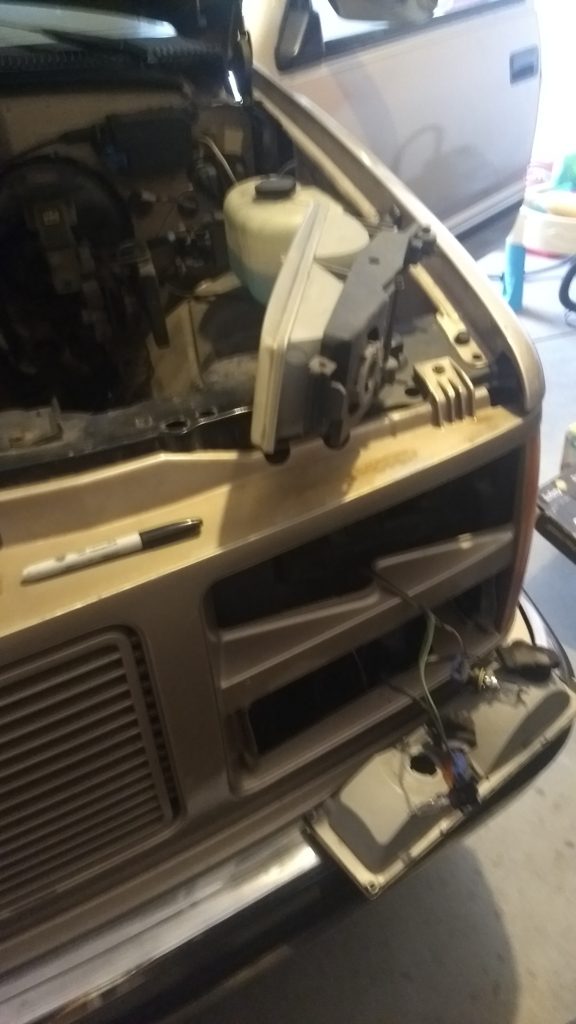
At Truck-Mentor Jim’s advice, the next step was to check to see if I had a blown fuse. I never even thought about cars having fuses, circuits, and circuit breakers, but just like a house, they do. The fuse box is conveniently located to the immediate left of the steering wheel and the fuses are labeled. In the Haynes manual it included photos of good and “blown” fuses. With a pair of needle-nose pliers I visually inspected each fuse to confirm they were all working.
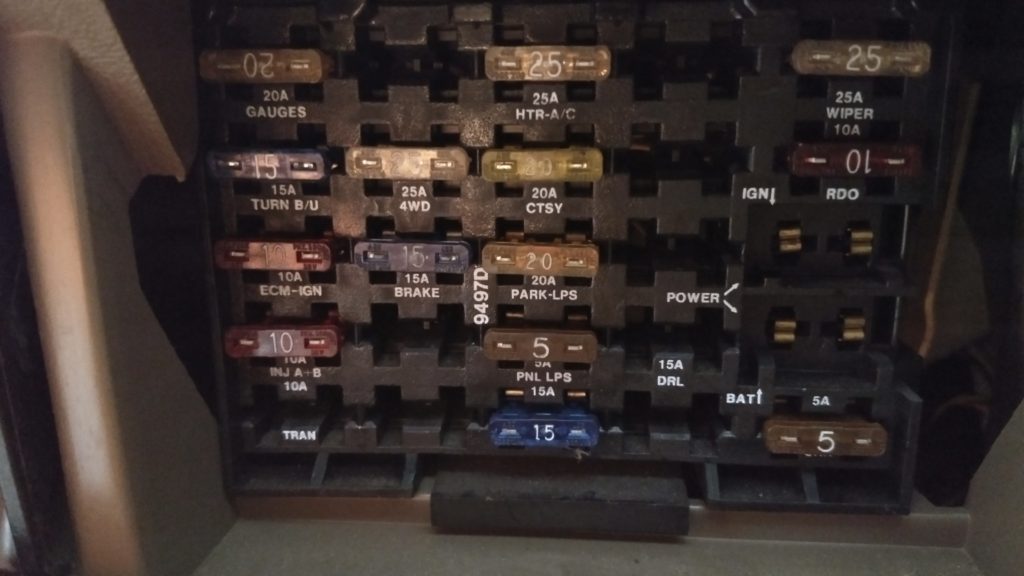
The fact that all the fuses were in working order was a good sign. It meant if the bulbs and the fuses were working, the physical switch on the dashboard used to turn off and on the headlights had, after years of wear, stopped working.
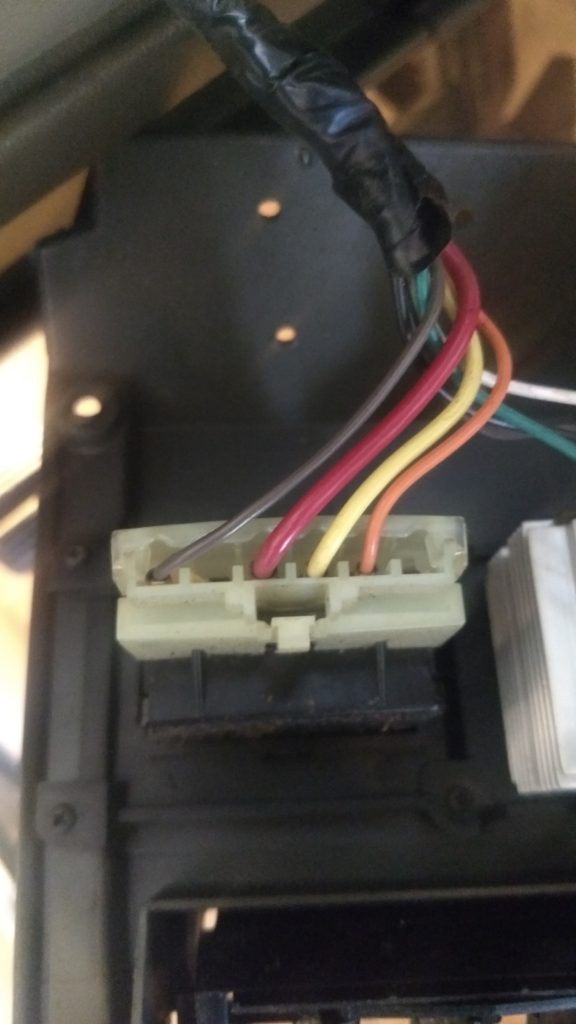
I unscrewed the dash cover and inspected the back of the headlight switch. No sign of wear on the wiring or the harness. I took a piece of soldering wire and bridged together the red and yellow wires to complete the circuit and the lights turned on! This was a huge milestone which meant I could now drive my truck at night even if I had to Jerry-rig a bridge out of a paperclip or soldering wire while I pursued a permanent fix Confirmed: the physical dashboard switch had failed.
A quick call to Auto Zone and $13 later and we are good as new. We are still abiding by Rule #2, as low cost as possible. I was amazed that Auto Zone had a part that was over 25 years old on hand and in stock and in the right color. I shared my amazement with the clerk at the store and he said, “We have over $600,000 of inventory in this store and more than $200,000 has never been sold in the six years I’ve worked here.” A rush of thoughts entered in my mind that he probably should not be sharing the value of the inventory with a random customer, but I was also amazed at what a treasure trove of parts must be tucked away, never to see the light of day. I also left wondering how Auto Zone makes a profit.
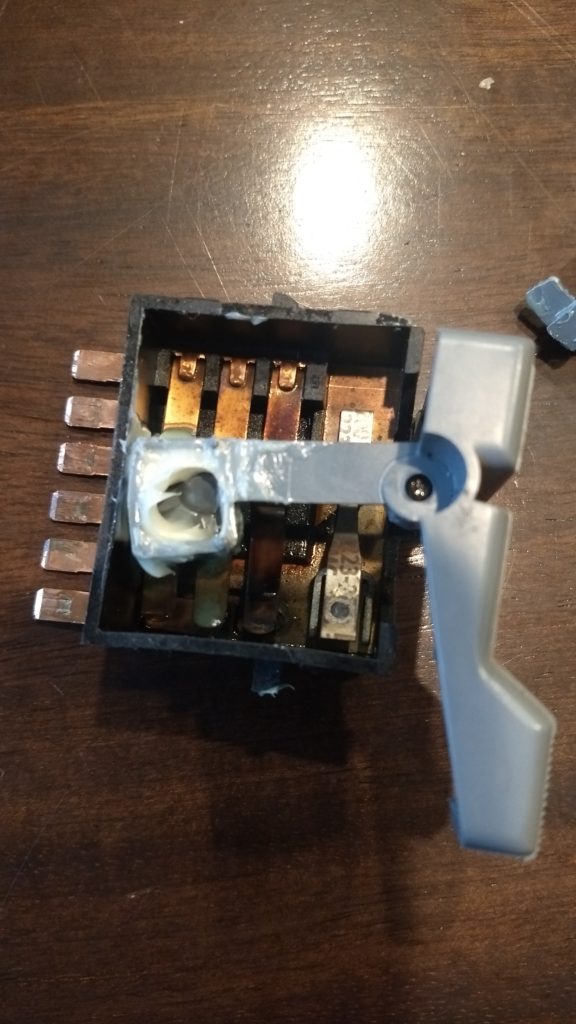
I busted open the old headlight switch and found a gooey, sticky paste. I’m not sure if someone else opened this up some time in the past and tried to patch it together or if after 25+ years this weird epoxy finally gave out causing the switch to fail. I closed everything up and we’re back in business. The truck has a fresh oil change, a couple of fresh light bulbs, confirmed the circuits are all working, and now it has a fresh headlight switch.
Learnings
I should have trusted my intuition when I first started the project. All the headlights going out at once was a clear sign that something else was wrong. I should have trusted my intuition and checked the fuses then the switch first.
The Haynes manual is a huge help. This bad boy guided me through each phase of the project: opening the headlights, finding the fuse box and checking the fuses, and then opening up the dash and replacing the switch.
Stumbling Blocks
This project had a lot of them! I am finishing up reading Zen and the Art of Motorcycle Maintenance. I will write about the book in a future post, but it introduces these things called, Gumption Traps, which are so stinking relevant.
A gumption trap is an event or mindset that can cause a person to lose enthusiasm and become discouraged from starting or continuing a project. The word “gumption” denotes a combination of commonsense, shrewdness, and a sense of initiative.
I was challenged by the following gumption traps. Just being aware of them helped me to move past them not get frustrated.
- It was cold in the garage.
- Garage had too much stuff everywhere which I kept tripping over.
- I didn’t have the parts so I had to run to the store. Then I had to run back to the store.
- One of the headlights had a stripped screw so it was impossible to open up.
- Wrapped my knuckle trying to get a headlight out.
- As with all things auto repair, the job took more than twice as long as I thought it would.
I did a good job adhering to Rule #4, and not rushing the job. At the end of the project I cleaned up the garage and put all the tools away. A small thing I know, but something I have always been terrible at. In so doing, I consciously avoided creating another gumption trap for my next project.